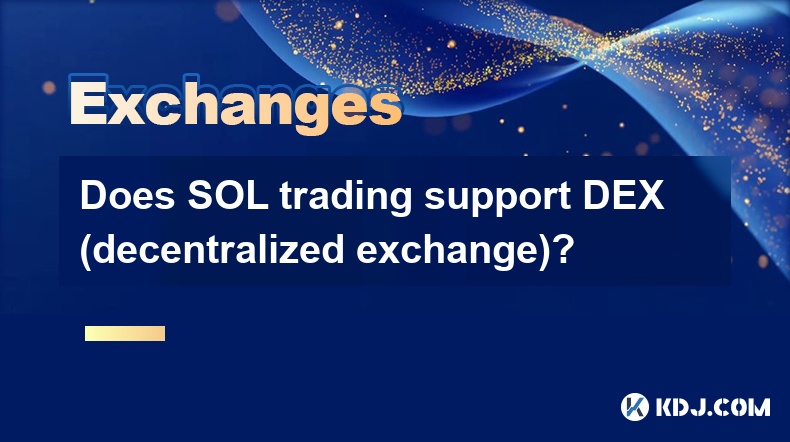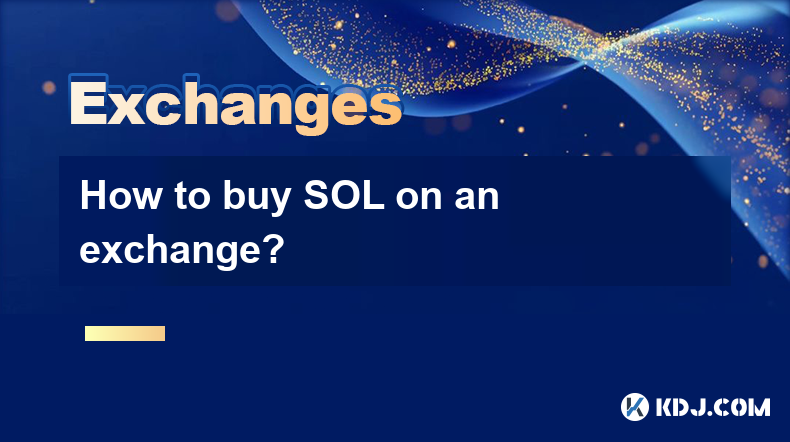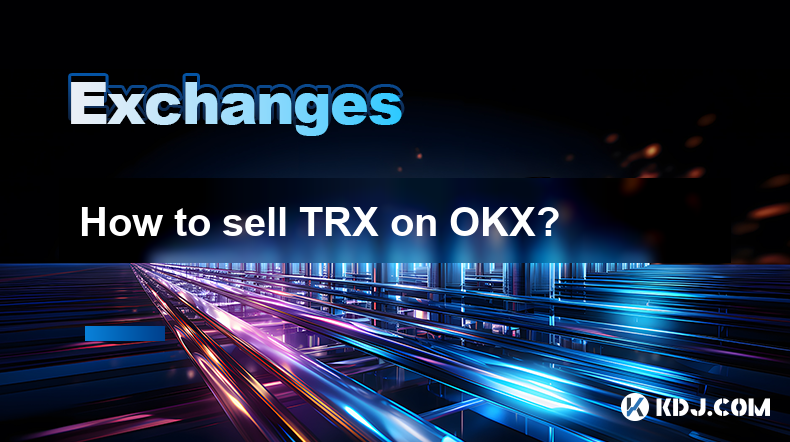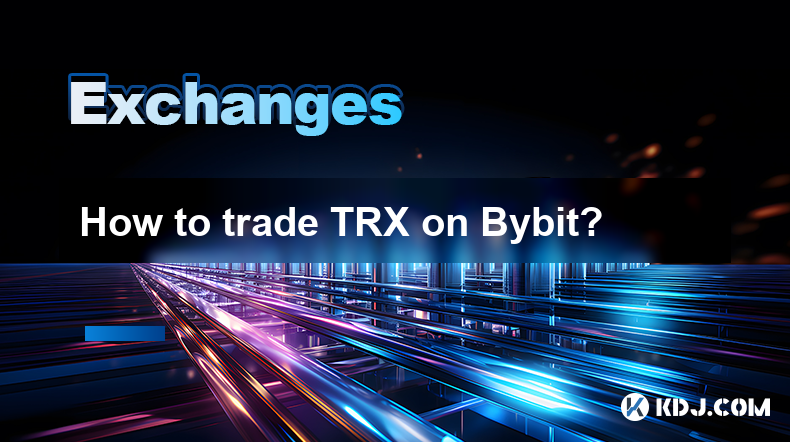-
 Bitcoin
Bitcoin $88,629.0112
1.53% -
 Ethereum
Ethereum $1,633.3416
0.24% -
 Tether USDt
Tether USDt $1.0000
0.01% -
 XRP
XRP $2.0979
-1.08% -
 BNB
BNB $605.5535
0.62% -
 Solana
Solana $140.2764
0.66% -
 USDC
USDC $1.0000
0.01% -
 Dogecoin
Dogecoin $0.1643
1.41% -
 TRON
TRON $0.2438
0.47% -
 Cardano
Cardano $0.6391
-0.43% -
 Chainlink
Chainlink $13.4401
-0.21% -
 Avalanche
Avalanche $20.3874
-0.96% -
 UNUS SED LEO
UNUS SED LEO $8.8373
-2.11% -
 Stellar
Stellar $0.2496
-3.26% -
 Sui
Sui $2.3313
3.08% -
 Shiba Inu
Shiba Inu $0.0...01260
-0.18% -
 Hedera
Hedera $0.1732
1.55% -
 Toncoin
Toncoin $2.9117
-3.34% -
 Bitcoin Cash
Bitcoin Cash $346.5808
1.81% -
 Hyperliquid
Hyperliquid $18.4964
3.15% -
 Litecoin
Litecoin $79.8162
-0.77% -
 Polkadot
Polkadot $3.7801
-3.27% -
 Dai
Dai $1.0000
0.00% -
 Bitget Token
Bitget Token $4.4558
-0.32% -
 Ethena USDe
Ethena USDe $0.9992
0.01% -
 Pi
Pi $0.6369
0.62% -
 Monero
Monero $217.7312
1.28% -
 Pepe
Pepe $0.0...08147
2.99% -
 Uniswap
Uniswap $5.4346
0.09% -
 Aptos
Aptos $4.9660
-4.00%
What is the contract liquidation mechanism of OKX Exchange?
OKX's liquidation mechanism uses mark and index prices to automatically close leveraged positions when margin falls below maintenance levels, employing algorithms to prioritize liquidation order and minimize market impact, while offering risk management tools like stop-loss orders.
Mar 02, 2025 at 01:00 pm

What is the Contract Liquidation Mechanism of OKX Exchange?
Key Points:
- Understanding Liquidation: Liquidation in the context of cryptocurrency derivatives trading occurs when a trader's position's margin balance falls below the maintenance margin requirement. This forces the exchange to automatically close the trader's position to prevent further losses. OKX's mechanism aims to minimize losses for the exchange and ensure fair market practices.
- Margin and Leverage: The core of the system revolves around margin (the collateral securing the trade) and leverage (the amount of borrowed funds used to amplify potential profits). Higher leverage magnifies both profits and losses, increasing the risk of liquidation. OKX offers varying leverage levels depending on the asset and contract.
- Mark Price vs. Index Price: OKX utilizes both a mark price (a real-time price calculated by OKX based on various market data) and an index price (a reference price from multiple exchanges) for calculating liquidation. The choice of price affects when liquidation occurs.
- Liquidation Order Priority: The order in which liquidations are processed is crucial to prevent cascading liquidations. OKX employs a sophisticated algorithm designed to efficiently and fairly liquidate positions while minimizing market impact.
- Risk Management Tools: OKX provides various tools to help users manage their risk and reduce the chances of liquidation. These tools include stop-loss orders, take-profit orders, and the ability to adjust margin levels.
Unordered List of Detailed Explanations:
- Understanding the Mechanics of Liquidation:
The liquidation mechanism on OKX, like other reputable exchanges, is designed to protect the exchange and its users from excessive losses due to volatile market conditions. When a user opens a leveraged position (e.g., a long or short contract on Bitcoin), they deposit a certain amount of collateral as margin. This margin acts as a security deposit, ensuring that the user can cover potential losses. The exchange establishes a maintenance margin requirement, which is a percentage of the position's notional value. This percentage varies depending on the asset being traded and the leverage used. If the value of the user's position declines to the point where the margin balance falls below the maintenance margin requirement, the exchange initiates a liquidation. This liquidation involves automatically closing the user's position, either partially or entirely, to recover the losses and prevent further losses. The liquidation price is determined by the exchange's algorithm, typically based on the market price at the time of liquidation. The proceeds from the liquidation are used to cover the user's losses, and any remaining funds are returned to the user. The goal is to prevent a situation where a single user's losses overwhelm the exchange's capacity. This cascading effect can destabilize the entire market. OKX's system is designed to prevent such scenarios. The complexity lies in balancing the speed of liquidation with the potential for market manipulation. A slow liquidation might lead to further losses, while a rapid liquidation can impact market prices negatively.
- The Role of Margin and Leverage in Liquidation:
The level of margin and the chosen leverage significantly influence the likelihood of liquidation. Higher leverage amplifies both gains and losses. While leverage allows users to control larger positions with a smaller initial investment, it also increases the risk of liquidation. For example, if a user employs 10x leverage on a Bitcoin contract and the price moves against their position by 10%, their margin balance will be completely wiped out, triggering liquidation. Conversely, lower leverage reduces the risk of liquidation but also limits potential profits. OKX clearly displays the margin requirement and the liquidation price for each trade, allowing users to understand their risk exposure. Understanding the interplay between margin, leverage, and price movements is crucial for responsible trading. Users need to carefully manage their risk by selecting appropriate leverage levels based on their risk tolerance and market conditions. Ignoring these factors can lead to unforeseen liquidations and significant financial losses. The exchange provides educational resources to help users understand the intricacies of margin trading and risk management. It is highly recommended that users take advantage of these resources before engaging in leveraged trading. Failing to understand the mechanisms can lead to disastrous consequences.
- Mark Price and Index Price in Liquidation Calculations:
OKX uses two crucial prices for calculating liquidation: the mark price and the index price. The mark price is an internal price calculated by OKX based on a combination of order book data, market data from various exchanges, and other proprietary algorithms. It aims to represent a fair and unbiased price for the asset. The index price is derived from a basket of prices from several different reputable exchanges. This offers a more broad-based reflection of market value. The choice between the mark price and the index price for liquidation depends on the specific contract and OKX’s risk management algorithms. The use of both prices helps mitigate potential manipulation or inaccurate price data from a single source. Using an index price as a reference provides a degree of protection against market manipulation attempts on individual exchanges. The mark price, being a dynamic calculation, is more responsive to short-term price fluctuations, potentially leading to faster liquidations during periods of high volatility. Understanding the difference between these two prices and how they impact liquidation is vital for risk management. Traders need to be aware that the price used for liquidation may differ from the price displayed on their trading terminal.
- The Order of Liquidation and its Impact:
The sequence in which liquidations are processed is crucial to maintaining market stability and fairness. A poorly designed liquidation system can trigger a cascade effect, where one liquidation leads to another, creating a domino effect that destabilizes the entire market. OKX utilizes a sophisticated algorithm to determine the order of liquidations, prioritizing positions with the lowest margin balance relative to their maintenance margin requirement. This prevents large-scale liquidations that could significantly affect market prices. The algorithm also takes into account the size of the position and the potential impact on the market. It’s designed to minimize market impact while ensuring fair and efficient liquidation. The aim is to liquidate positions gradually and prevent a sudden, large-scale market disruption. While the exact algorithm is proprietary information, OKX aims for a system that is transparent and fair. The system's efficiency is critical for maintaining market integrity and user trust. Disruptions caused by inefficient liquidation processes can erode confidence in the exchange and negatively affect market liquidity.
- Risk Management Tools Offered by OKX:
OKX offers a suite of risk management tools designed to help users minimize the risk of liquidation and better control their trading positions. These tools include: Stop-loss orders, which automatically close a position when the price reaches a predetermined level; Take-profit orders, which automatically close a position when the price reaches a predetermined profit target; and the ability to adjust margin levels, allowing users to increase their margin to reduce the likelihood of liquidation. Users can also set trailing stop-loss orders, which adjust the stop-loss price as the position moves in a favorable direction, locking in profits while minimizing losses. These tools are crucial for responsible trading and can significantly reduce the risk of liquidation. The exchange emphasizes the importance of utilizing these tools to manage risk effectively. Understanding and using these features empowers users to take control of their trades and mitigate potential losses. Education on these risk management tools is readily available on the OKX platform, enabling traders to learn how to use them effectively. This educational material is essential for informed decision-making and responsible trading practices.
FAQs:
Q: What happens to my funds after liquidation on OKX?
A: After liquidation, OKX uses the proceeds from the sale of your liquidated position to cover your losses. Any remaining funds are returned to your OKX account. If the liquidation does not fully cover your losses, you may experience a net loss.
Q: Can I prevent liquidation?
A: While you cannot guarantee prevention, you can significantly reduce the risk of liquidation by using risk management tools such as stop-loss orders, adjusting your leverage, and monitoring your margin levels closely.
Q: How does OKX determine the liquidation price?
A: The liquidation price is determined by a combination of the mark price and the index price, depending on the specific contract and OKX’s risk management algorithms. The goal is to find a fair and efficient price to close the position.
Q: What is the difference between margin and maintenance margin?
A: Initial margin is the amount of collateral you initially deposit to open a leveraged position. The maintenance margin is the minimum amount of collateral required to keep your position open. If your margin balance falls below the maintenance margin, your position is at risk of liquidation.
Q: What if the market moves rapidly against my position?
A: Rapid market movements increase the likelihood of liquidation, especially with higher leverage. Utilizing stop-loss orders and carefully managing your leverage can help mitigate this risk. It's important to monitor your positions closely during periods of high volatility.
Q: Is the OKX liquidation system fair?
A: OKX aims for a fair and transparent liquidation system. The algorithms are designed to minimize market impact and prevent cascading liquidations. However, due to the volatile nature of the cryptocurrency market, unforeseen events can still occur. The system prioritizes minimizing losses for the exchange while trying to be as fair as possible to its users.
Q: Where can I find more information about OKX's liquidation policy?
A: Detailed information on OKX's liquidation policy and risk management tools is usually available on the OKX website's help center or FAQ section. It is recommended to carefully review this information before engaging in leveraged trading.
Disclaimer:info@kdj.com
The information provided is not trading advice. kdj.com does not assume any responsibility for any investments made based on the information provided in this article. Cryptocurrencies are highly volatile and it is highly recommended that you invest with caution after thorough research!
If you believe that the content used on this website infringes your copyright, please contact us immediately (info@kdj.com) and we will delete it promptly.
- From a Coin That Wasn't Supposed to Exist to Another That Got Melted Down
- 2025-04-22 21:00:12
- 3 Cryptos to Buy Now Before Parabolic Gains Hit
- 2025-04-22 21:00:12
- Coinbase Derivatives launches XRP-Future contracts, approved by the American Commodity Futures Trading Commission (CFTC)
- 2025-04-22 20:55:13
- Amp (AMP) price prediction: Can this token continue its bullish run?
- 2025-04-22 20:55:13
- Trump Establishes a Limited Bitcoin Strategic Reserve via Executive Order
- 2025-04-22 20:50:12
- Meme Coin Did Not Ruin This Cycle, But Instead Accelerated the Maturity of the Industry as a Market Catalyst
- 2025-04-22 20:50:12
Related knowledge

Does SOL trading support DEX (decentralized exchange)?
Apr 19,2025 at 05:21am
Solana (SOL), a high-performance blockchain platform, has gained significant attention in the cryptocurrency community for its fast transaction speeds and low fees. One of the key aspects that traders and investors often inquire about is whether SOL trading supports decentralized exchanges (DEXs). In this article, we will explore this topic in detail, p...

How to choose a reliable SOL trading platform?
Apr 21,2025 at 12:07am
Choosing a reliable SOL trading platform is crucial for anyone looking to engage in trading Solana (SOL) cryptocurrency. With the growing popularity of Solana, numerous platforms have emerged, each offering different features and levels of security. This article will guide you through the essential factors to consider when selecting a reliable SOL tradi...

On which platforms can SOL be bought and sold?
Apr 21,2025 at 10:22am
Solana (SOL) is a popular cryptocurrency known for its high transaction speeds and low fees, making it a favored choice among crypto enthusiasts. If you're looking to buy or sell SOL, there are several platforms where you can do so. In this article, we will explore the various platforms that support the trading of SOL, ensuring you have a comprehensive ...

How to buy SOL on an exchange?
Apr 20,2025 at 01:21am
Introduction to Buying SOL on an ExchangeSOL, the native cryptocurrency of the Solana blockchain, has garnered significant attention in the crypto world due to its high throughput and low transaction costs. If you're interested in adding SOL to your investment portfolio, buying it on a cryptocurrency exchange is one of the most straightforward methods. ...

How to sell TRX on OKX?
Apr 18,2025 at 11:07pm
Selling TRX on OKX is a straightforward process that can be completed in a few simple steps. This article will guide you through the entire process, ensuring that you understand each step thoroughly. Whether you are a beginner or an experienced trader, this guide will help you navigate the OKX platform with ease. Preparing to Sell TRX on OKXBefore you c...

How to trade TRX on Bybit?
Apr 20,2025 at 04:15pm
Trading TRX on Bybit can be an exciting venture for both new and experienced cryptocurrency traders. Bybit, known for its robust trading platform and user-friendly interface, offers a variety of features that can help you trade TRX effectively. In this guide, we'll walk you through the essential steps and tips to successfully trade TRX on Bybit. Setting...

Does SOL trading support DEX (decentralized exchange)?
Apr 19,2025 at 05:21am
Solana (SOL), a high-performance blockchain platform, has gained significant attention in the cryptocurrency community for its fast transaction speeds and low fees. One of the key aspects that traders and investors often inquire about is whether SOL trading supports decentralized exchanges (DEXs). In this article, we will explore this topic in detail, p...

How to choose a reliable SOL trading platform?
Apr 21,2025 at 12:07am
Choosing a reliable SOL trading platform is crucial for anyone looking to engage in trading Solana (SOL) cryptocurrency. With the growing popularity of Solana, numerous platforms have emerged, each offering different features and levels of security. This article will guide you through the essential factors to consider when selecting a reliable SOL tradi...

On which platforms can SOL be bought and sold?
Apr 21,2025 at 10:22am
Solana (SOL) is a popular cryptocurrency known for its high transaction speeds and low fees, making it a favored choice among crypto enthusiasts. If you're looking to buy or sell SOL, there are several platforms where you can do so. In this article, we will explore the various platforms that support the trading of SOL, ensuring you have a comprehensive ...

How to buy SOL on an exchange?
Apr 20,2025 at 01:21am
Introduction to Buying SOL on an ExchangeSOL, the native cryptocurrency of the Solana blockchain, has garnered significant attention in the crypto world due to its high throughput and low transaction costs. If you're interested in adding SOL to your investment portfolio, buying it on a cryptocurrency exchange is one of the most straightforward methods. ...

How to sell TRX on OKX?
Apr 18,2025 at 11:07pm
Selling TRX on OKX is a straightforward process that can be completed in a few simple steps. This article will guide you through the entire process, ensuring that you understand each step thoroughly. Whether you are a beginner or an experienced trader, this guide will help you navigate the OKX platform with ease. Preparing to Sell TRX on OKXBefore you c...

How to trade TRX on Bybit?
Apr 20,2025 at 04:15pm
Trading TRX on Bybit can be an exciting venture for both new and experienced cryptocurrency traders. Bybit, known for its robust trading platform and user-friendly interface, offers a variety of features that can help you trade TRX effectively. In this guide, we'll walk you through the essential steps and tips to successfully trade TRX on Bybit. Setting...
See all articles























































































